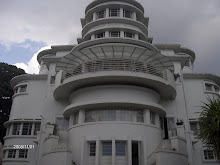English literature is came time trough time. So that English Literature has its own period of time. Below is about the English Literature's Periods.
Old English (Anglo-Saxon) Period (428-1066 CE), this period is also called the Dark Ages (455 CE -799 CE). It occurs when Rome falls and barbarian tribes move into Europe. Franks, Ostrogoths, Lombards, and Goths settle in the ruins of Europe and the Angles, Saxons, and Jutes migrate to Britain, displacing native Celts into Scotland, Ireland, and Wales.
The number of the texts in this period is very small, comprising anonymous magic charm, and the poem is based on historical fact. Early Old English poems such as Beowulf, The Wanderer, and The Seafarer are examples of the literature in the Anglo-Saxon period.
Middle English Period (1066-1460 CE), in this period, there are a lot of various genre in every text. The texts are such as lyric poetry and epic “long poems” with religious contents.
"High" Medieval Period (c. 1200-1485 CE): This often tumultuous period is marked by the Middle English writings of Geoffrey Chaucer, the "Gawain" or "Pearl" Poet, the Wakefield Master, and William Langland. Other writers include Italian and French authors like Boccaccio, Petrarch, Dante, and Christine de Pisan.
The Renaissance and Reformation period (c. 1485-1660 CE). This period is also called The Early New English Period. In this period, term focuses on the history of the language, and the Elizabethan Age (Queen Elizabeth I) or Jacobean Age (King James), divisions based on political rule.
In this period, there is the revival of classical genres, such as epic with Edmund Spenser’s and drama with William Shakespeare, Christopher Marlowe and others.
English Renaissance is also produce prose genres, such as, John Lyly’s romance Euphues or Philip Sidney’s Arcadia.
The Enlightenment (Neoclassical) Period (c. 1660-1790). This period also called as the Golden or Augustan Age. In this period, classical literature and literary theory were adapted to suit contemporary culture. Authors such as John Dryden, Alexander Pope, Joseph Addinson and Jonathan Swift wrote translations, theoretical essays and literary texts in a variety of genres. The examples of the texts are the Tatler and the Spectator.
Then, the Romantic Period (c. 1790-1830). Romantic poets write about nature, imagination, and individuality in England. Some Romantics include Coleridge, Blake, Keats, and Shelley in Britain and Johann von Goethe in Germany. Jane Austen also writes at this time, though she is typically not categorized with the male Romantic poets.
In America, this period is mirrored in the Transcendental Period from about 1830-1850. Transcendentalists include Emerson and Thoreau. Gothic writings, (c. 1790-1890) overlap with the Romantic and Victorian periods. Writers of Gothic novels (the precursor to horror novels) include Radcliffe, Monk Lewis, and Victorians like Bram Stoker in Britain.
The Victorian and the 19th Century (c. 1832-1901). This period called the Victorian Age, because this time is Queen Victoria’s reign. Writing during the period of Queen Victoria's reign includes sentimental novels. British writers include Elizabeth Browning, Alfred Lord Tennyson, Matthew Arnold, Robert Browning, Charles Dickens, and the Brontë sisters. Pre-Raphaelites, like the Rossettis and William Morris, idealize and long for the morality of the medieval world. The end of the Victorian Period is marked by intellectual movements of Aestheticism and "the Decadence" in the writings of Walter Pater and Oscar Wilde. In America, Naturalist writers like Stephen Crane flourish, as do early free verse poets like Walt Whitman and Emily Dickinson.
The Modern Period (c. 1914-1945) can be seen as a reaction to the Realist movements of the late nineteenth century. Modernism discovered innovative narrative techniques such as stream of consciousness or structural forms such as collage and literary Cubism. In Britain, modernist writers include W. B. Yeats, Seamus Heaney, Dylan Thomas, W. H. Auden, Virginia Woolf, and Wilfred Owen. In America, the modernist period includes Robert Frost and Flannery O'Connor as well as the famous writers of The Lost Generation (also called the writers of The Jazz Age, 1914-1929) such as Hemingway, Stein, Fitzgerald, and Faulkner.
The Postmodern Period (c. 1945 onward). In Postmodernism, modernist issues regarding innovative narrative techniques are taken up again and adapted in an academic, sometimes formalistic way. This literary movement indirectly deals with Nazi crimes and the nuclear destruction of World War II. The characteristics of the text in this era are narrative with multiple perspectives, interwoven strands of plot and experiments in typography. The examples are Ulysses, Dubliners, Heart of Darkness.
References:
web.cn.edu/kwheeler/documents/Periods_Lit_History.pdf
Klarer, Mario. 1998. An Introduction to Literary Studies. London: Rouledge.
-Hemmy Nur Hamidah (0807339, class B)-
Jumat, 02 Oktober 2009
Langganan:
Posting Komentar (Atom)


Tidak ada komentar:
Posting Komentar